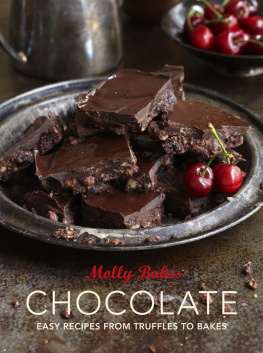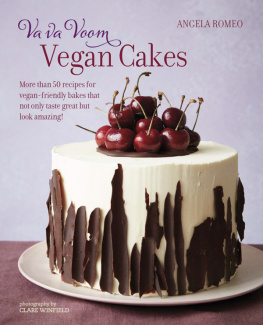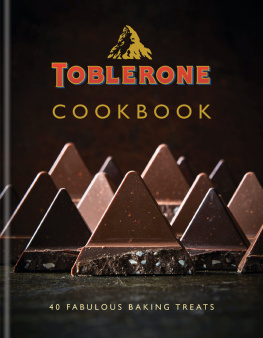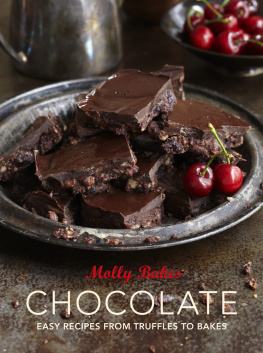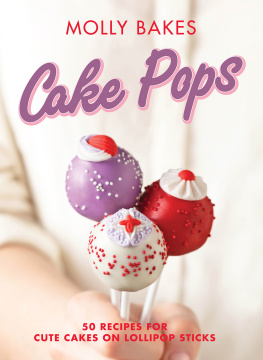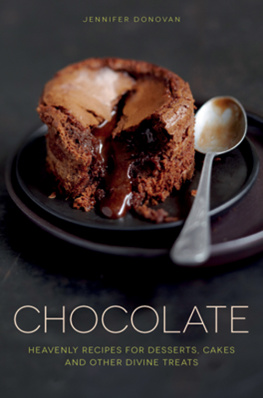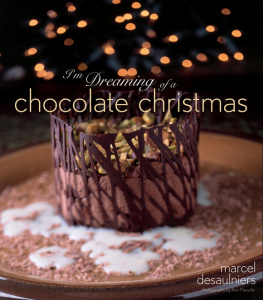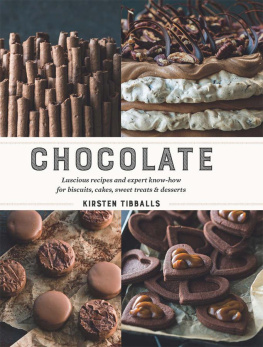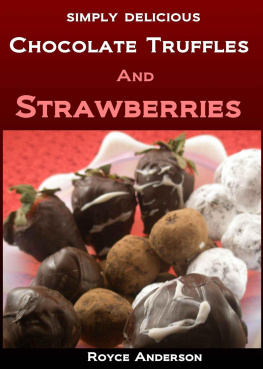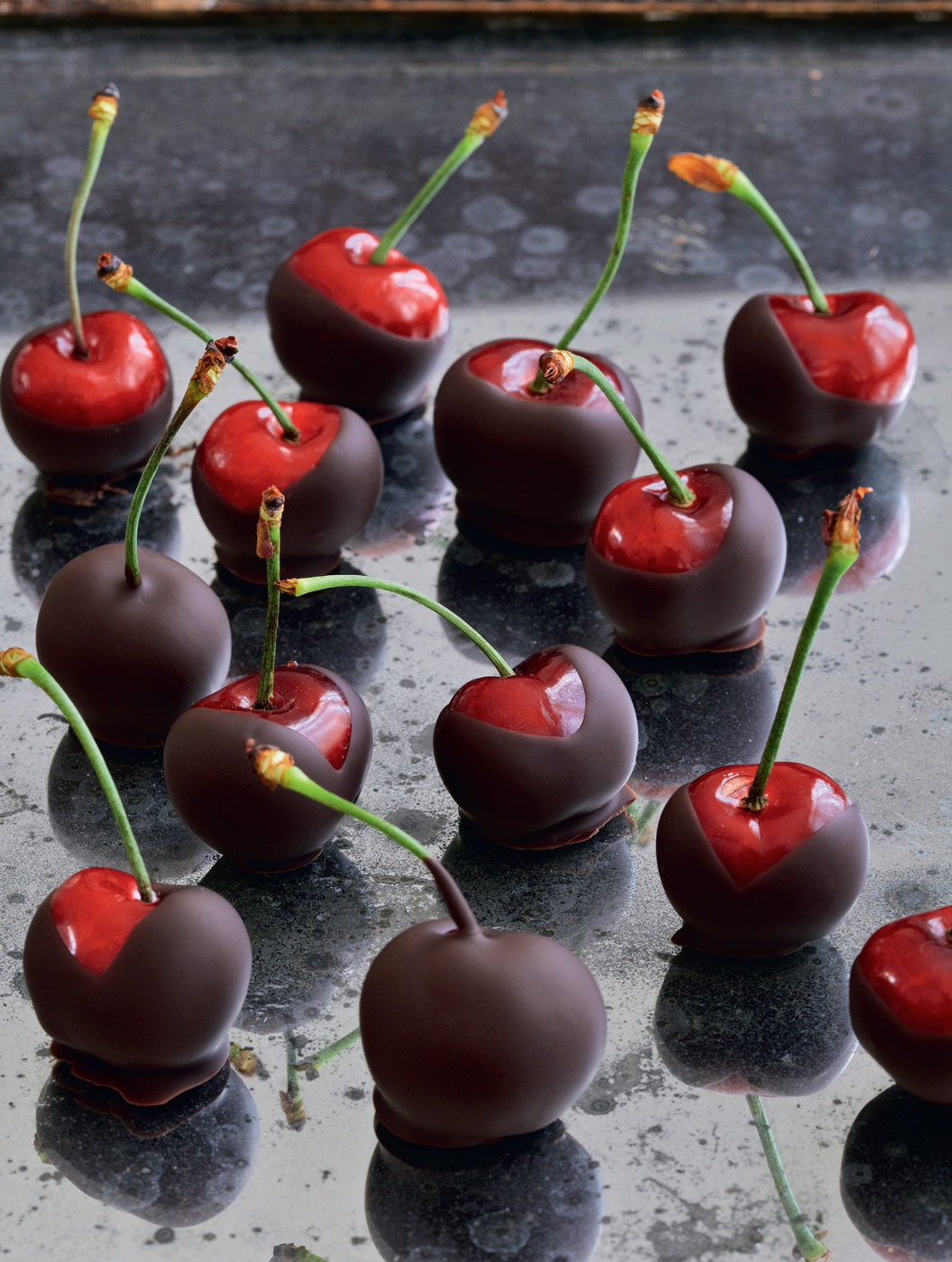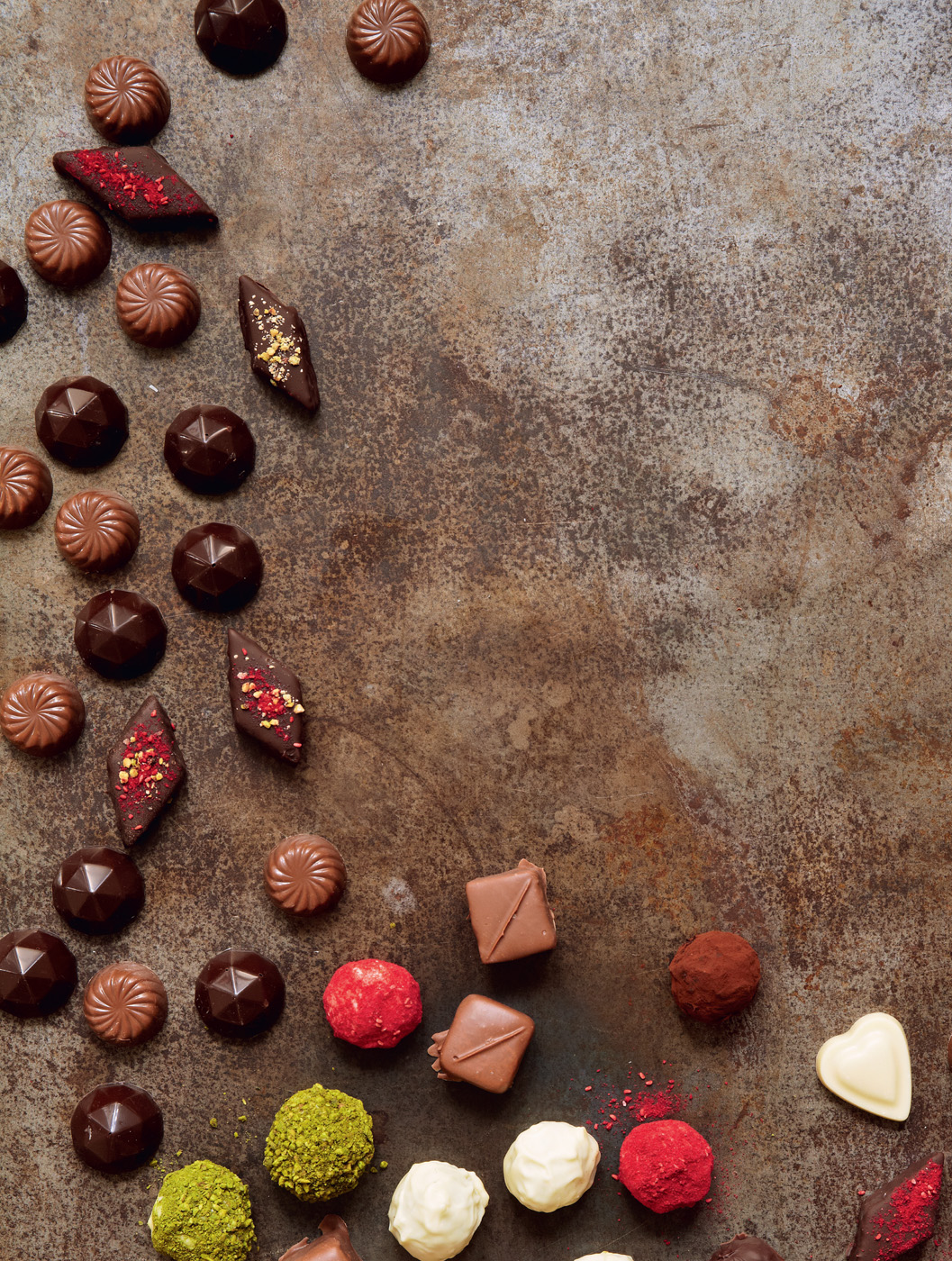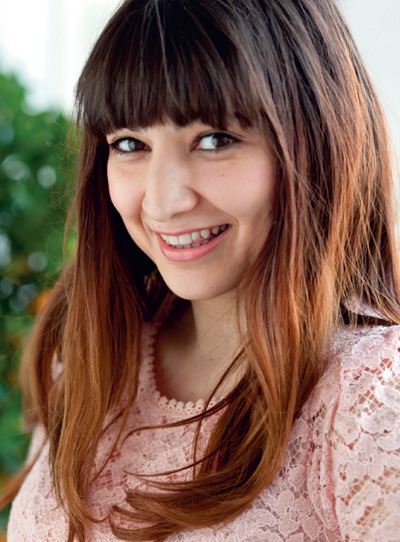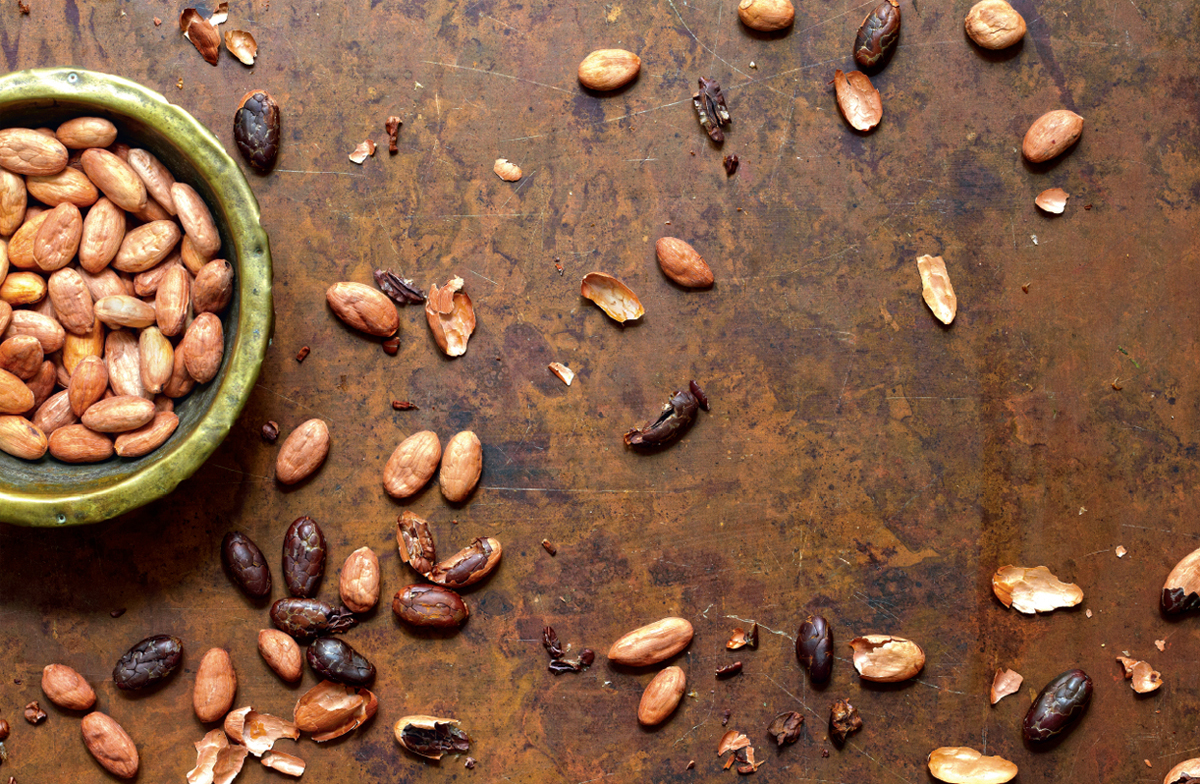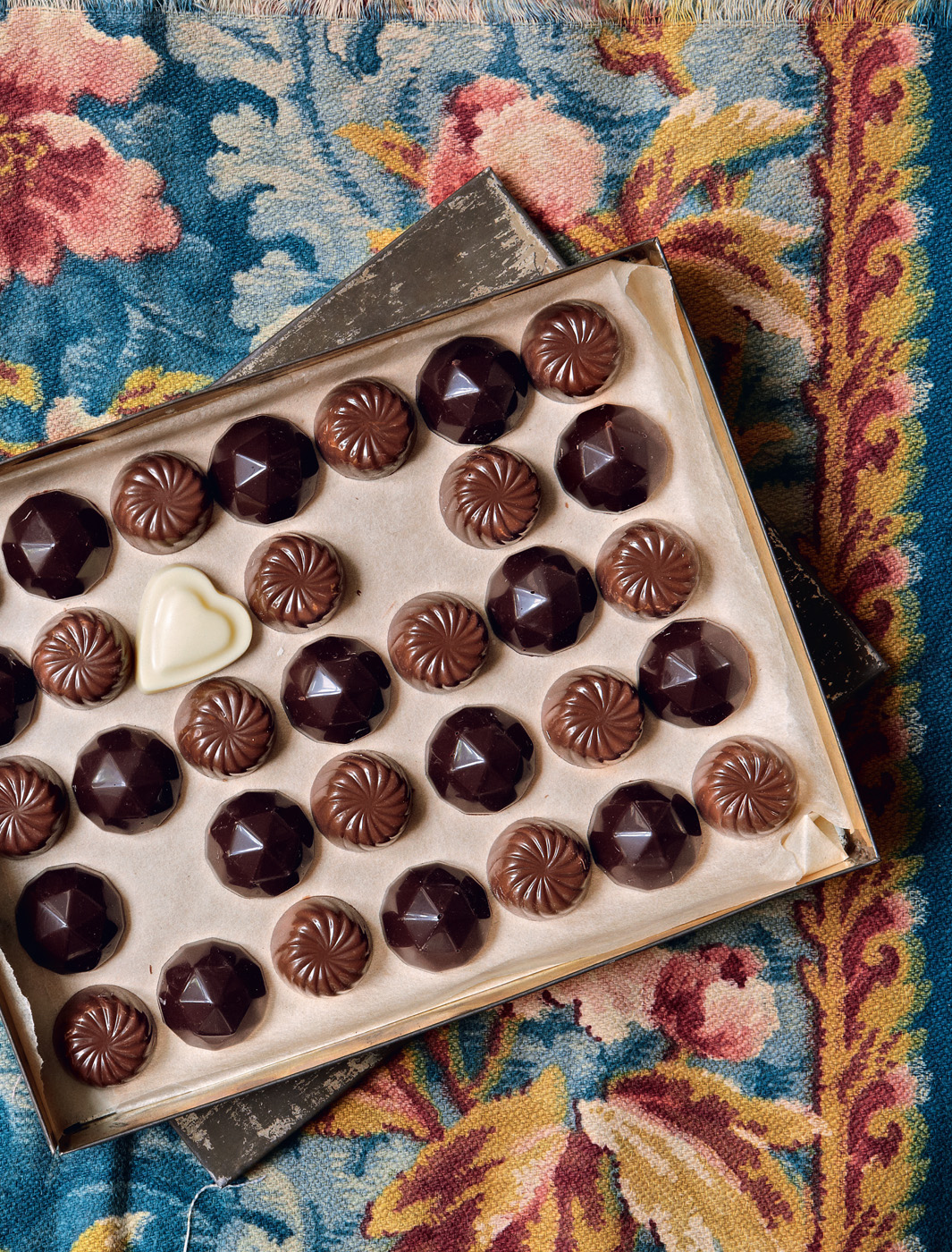Chocolate is a magical ingredient. Everyone loves eating it. And if you can cook with it, your baking will rise to a whole new level. But heres an untold secret cooking with chocolate can be incredibly easy.
Here Molly Bakes shares with us 50 of her favourite recipes for chocolate treats that are stylish, playful and totally delicious. They include:
Molly Bakes began her baking career in 2009 when she lost her job in the recession. She is not a formally trained baker so she knows how to take the mystery out of seemingly specialist areas of baking. Her first book Cake Pops, published in 2011, was a hit. Her fans have included Vogue and Lady Gaga.
This book is for Farah who loves chocolate. She loves to talk about it, she loves to eat it and now hopefully shell also learn to cook with it.
INTRODUCTION
Chocolate. It has always been my weakness, along with cakes and anything else thats sweet, for that matter.
I did more eating than baking until recent years. Its not that I didnt want to cook, its just that I had been lucky enough to be surrounded all my life by parents and relatives who were great cooks, so I didnt feel the need to learn.
It all started with unemployment and boredom. I suddenly became interested in making food rather than just eating it. I wanted to make great cakes and had not much else to do than experiment in the kitchen. Baking quickly became my passion. It was 2009 and the start of the recession when, in my parents North London kitchen, Molly Bakes was born.
I love cooking with chocolate and it has always been an important ingredient for me in the bakery. But I must admit Ive felt daunted too, especially when it comes to tasks more complex than swirling chocolate through bakes. It needs to be melted carefully and then tempered if you want it to look perfect. Then theres all that dipping and moulding. It sounded like a great big faff.
Then one day I asked myself, Are you the same girl who started a baking business from nothing but enthusiasm? Deep down I knew I was afraid of learning something again so I gave myself a pep talk and havent looked back.
While I am not going to call myself a chocolatier (that takes up to 5 years study), through practice Ive overcome my fear and now regularly experiment with different recipes to create chocolates for the Molly Bakes range. After all, chocolate and cake go so well together.
This book is for anyone who loves chocolate but wants easy and approachable recipes and techniques. You can make everything easily in your own kitchen, with very little equipment, from your own versions of childhood treats to boxes of chocolates as gifts.
Chocolate Origins
COCOA BEANS
The creation of chocolate from bean to bar is a fascinating and lengthy process. Its important to understand what goes into making this luxurious ingredient since there are so many varieties of chocolate available. Knowing how it is made will help you choose a good quality one. Its easy to be tempted to buy a cheaper alternative when there are so many on the market but Ive always been a believer in using good quality ingredients. Remember, the higher quality the chocolate the better the recipes in this book will taste. Ive given guidelines on how to choose the right chocolate .
Cocoa beans come from cacao pods which grow on the cacao tree, also known by its Latin name Theobroma cacao (meaning food of the gods). This small, tropical tree originates in South and Central America but you can also find it growing in other parts of the world.
There are three main types of cocoa bean:
Criollo The native bean. This is the finest type of cacao or cocoa and the most expensive. Originally from Venezuela, it is also the rarest because criollo trees are less adaptable to different climates and today there are very few true criollo trees remaining. Criollo chocolate bars have a distinctive and complex taste which can include flavours of caramel, nuts, vanilla and tobacco.
Forastero The foreign bean. The most common variety of cocoa bean, the forastero has been cultivated for mass production and can be found all over the world. Forastero beans represent 80% of the worlds cocoa production and are used for making everyday chocolate.
Trinitario A hybrid between criollo and forastero, the trinitario tree originated in Trinidad. The trees were developed after a mysterious disease struck Trinidads criollo trees in 1727, damaging the countrys cocoa economy. To salvage cocoa production, forastero seeds were planted and cross-pollinated with the remaining criollo trees to make this new variety. The trinitario makes up 1015% of the worlds cocoa beans today and is most likely to be found in fine chocolates.
Harvesting and Processing
Most African beans are of the common forastero variety. Ghana and the Ivory Coast are the worlds largest producers of cocoa beans, and cocoa grown in Latin America and the Caribbean is generally of the highest quality.
A single cacao tree can produce up to 2000 cocoa pods a year but this is enough for only about 1kg of chocolate. The pods are rigid and shaped like rugby balls. They mature throughout the year, and each pod produces 3040 seeds. Its from these seeds that cocoa solids and cocoa butter are extracted. It takes six months for a single cacao pod to ripen. If you were to eat the seeds straight out of the pod theyd be very bitter, nothing like the end product.
Twice a year the pods are harvested then fermented and dried in the sun for a week. The beans are then graded and roasted at high temperatures to intensify the flavours. The higher the roasting temperature, the more bitter the beans become so more sugar must be added. Cheaper chocolates are made this way. Good quality chocolate is made from beans that are roasted for longer at lower temperatures.
Next, the outer shells are cracked, leaving the nibs, which are crushed pieces of the bean. Cocoa nibs are edible and really chocolatey but still very bitter. They can be eaten raw as a snack, used as an ingredient or for decoration. To make chocolate, the cocoa nibs are ground into a thick paste called cocoa liquor. This liquor is bitter and not like the smooth, creamy chocolate we know and love. By adding sugar, cocoa butter, vanilla and milk, the liquor is finally transformed into chocolate. How much is added to the liquor will depend on whether it is to make dark or milk.

